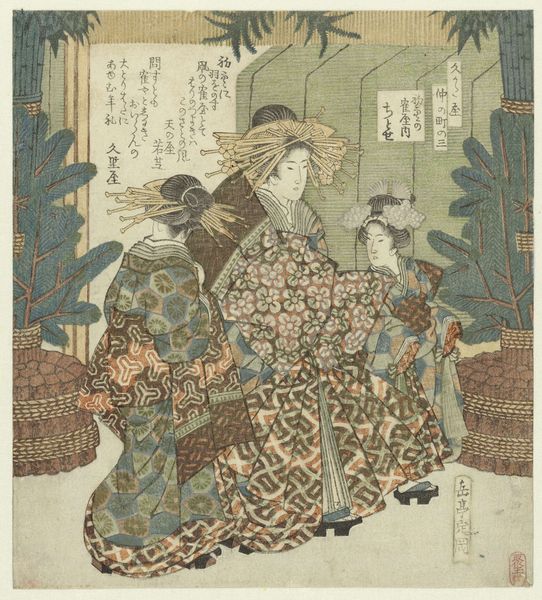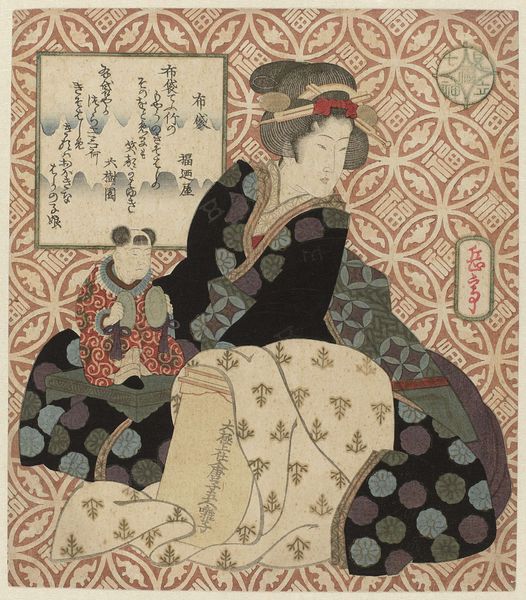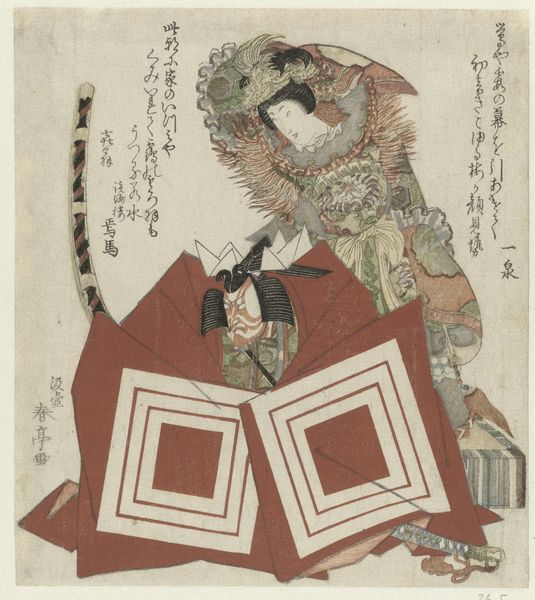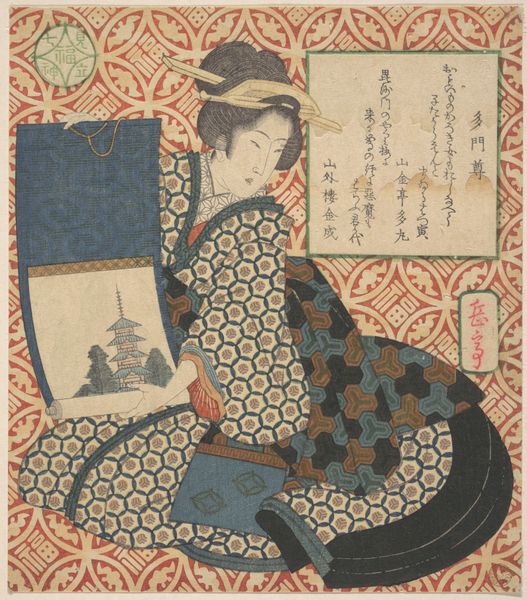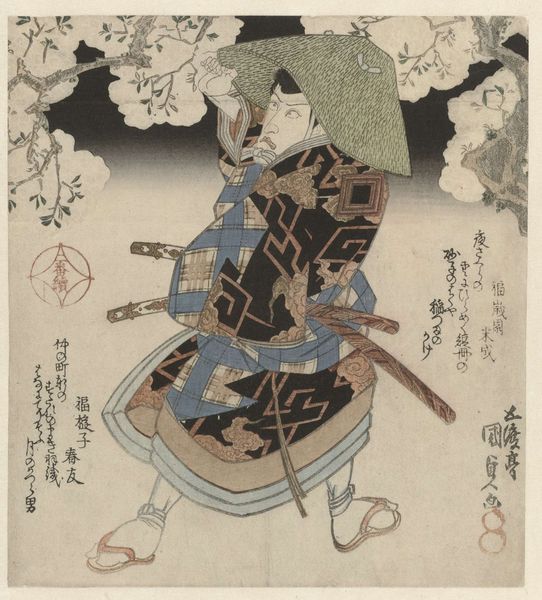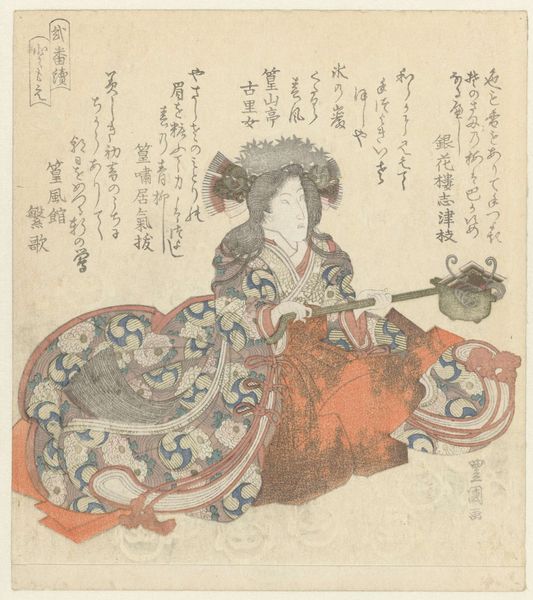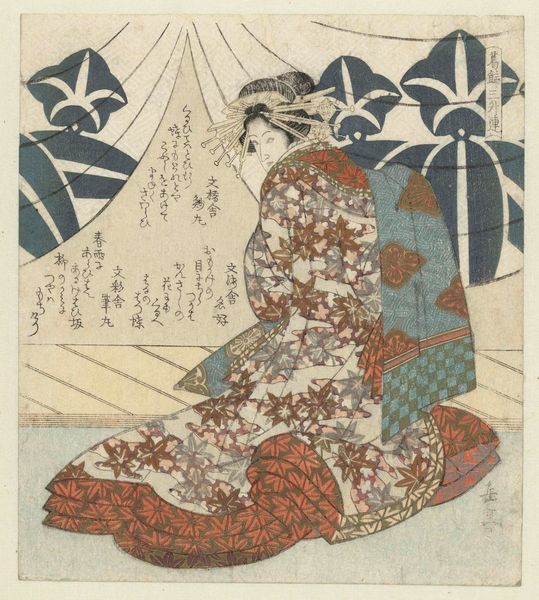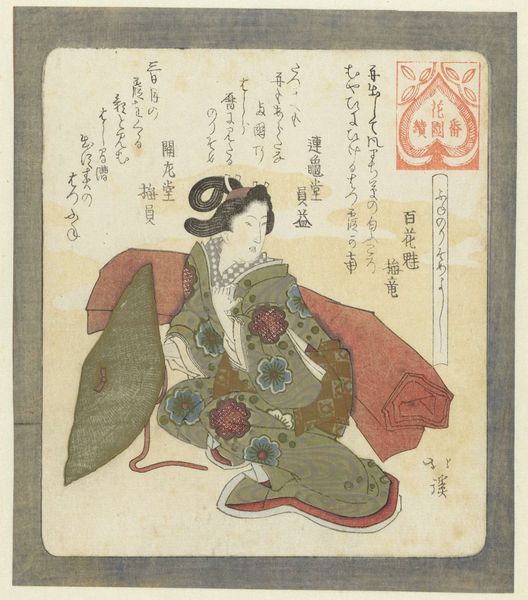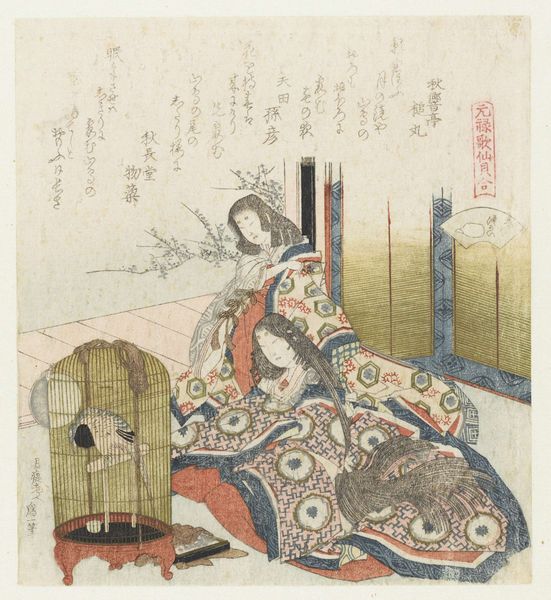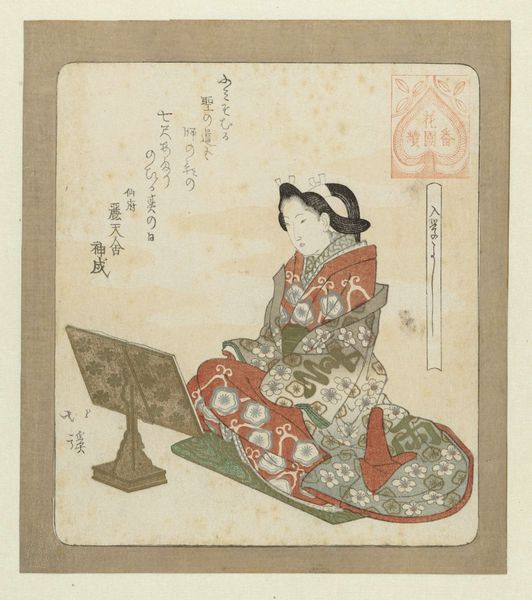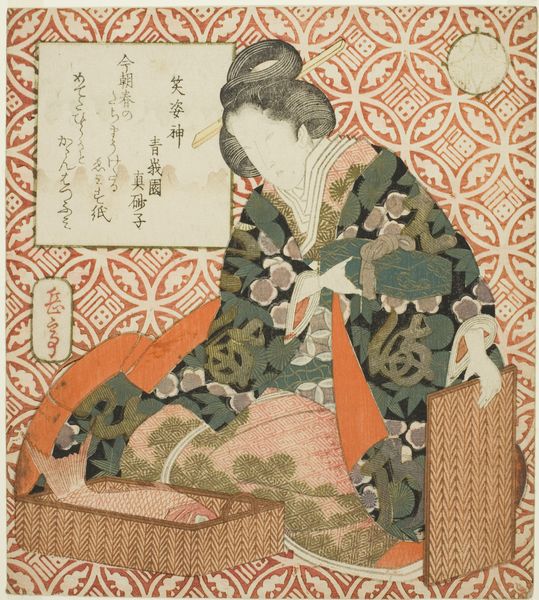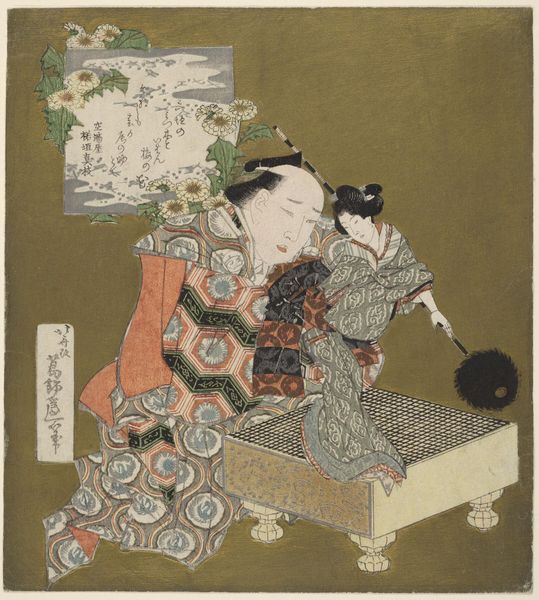
Jurojin, from the series "A Parody of the Seven Gods of Good Fortune (Mitate shichifukujin)" c. 1828
0:00
0:00
print, woodblock-print
#
portrait
# print
#
asian-art
#
ukiyo-e
#
japan
#
figuration
#
woodblock-print
#
watercolor
Dimensions: 21.8 × 19.8 cm
Copyright: Public Domain
Editor: This print, at The Art Institute of Chicago, is called "Jurojin, from the series 'A Parody of the Seven Gods of Good Fortune,'" by Yashima Gakutei, around 1828. The figure seems to be immersed in reading, maybe even lost in thought, like finding solace in the words. What's your perspective on this Ukiyo-e woodblock print? Art Historian: Yashima Gakutei offers a beautiful twist here. On the surface, we see the trappings of traditional Ukiyo-e portraiture: a serene figure, intricate patterns. But Gakutei subtly reframes it. I imagine him chuckling, nudging us to reconsider what we see as divine or fortunate. What I find striking is the delicate tension between the familiar aesthetic and the satirical intent. Doesn't it make you question the nature of reverence itself? Editor: I see what you mean, It does make you wonder, is the artist questioning traditional views? Art Historian: Precisely. And isn’t it amazing how a simple image, born from carved wood, can contain such layers of meaning? For me, this is not merely an image. It's a playful poke at the gilded cage of tradition, where even the gods themselves can be parodied. Perhaps Yashima is prompting us to find our own fortunes, outside prescribed notions. What do you take away? Editor: It's made me consider that even within the traditional Ukiyo-e style, there is a lot of room for humor and social commentary. Thank you. Art Historian: My pleasure, It is through that combination, that art transcends being a simple portrait. It is indeed like catching a falling star, unexpected but breathtaking.
Comments
No comments
Be the first to comment and join the conversation on the ultimate creative platform.
